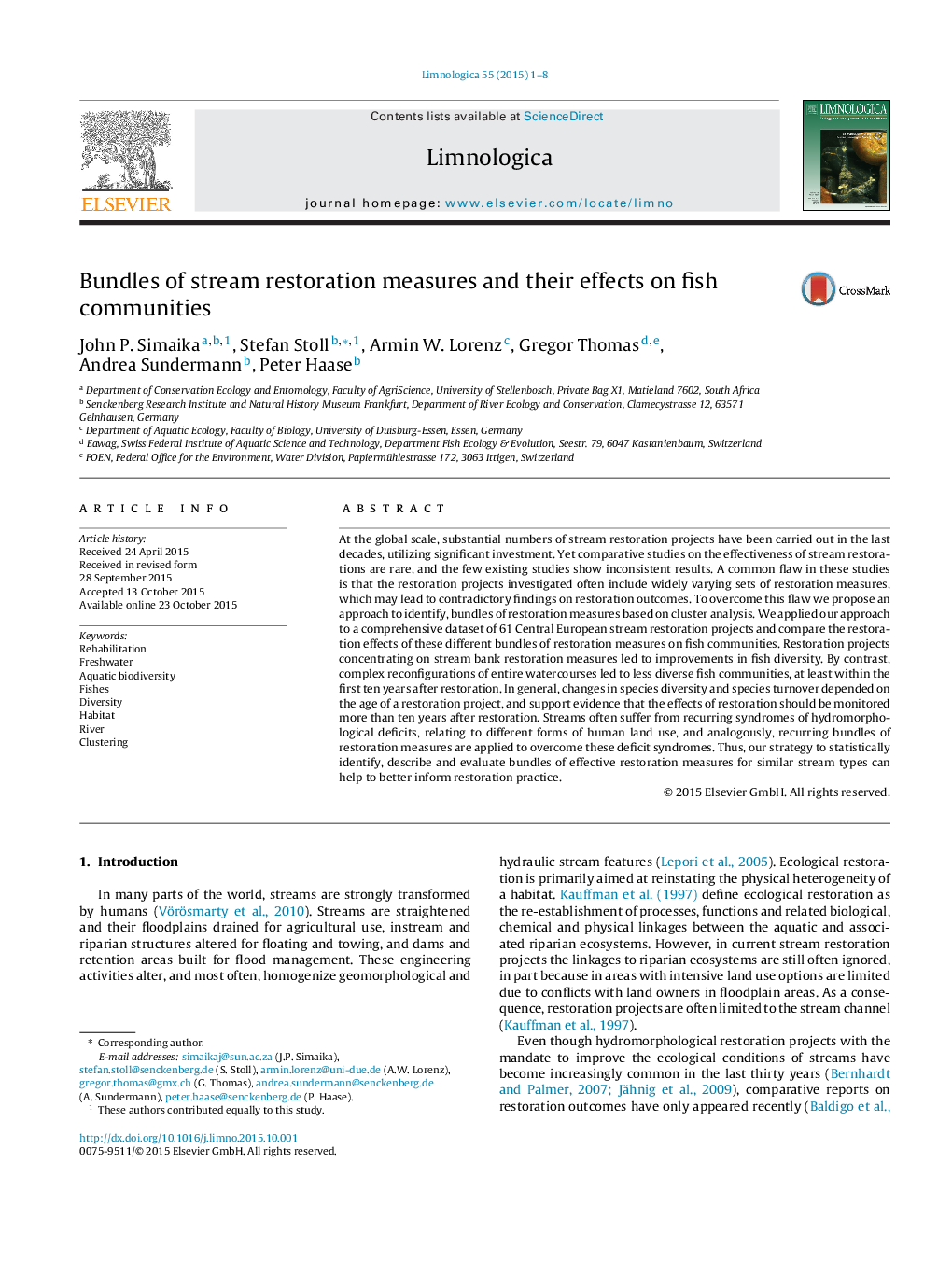| Article ID | Journal | Published Year | Pages | File Type |
|---|---|---|---|---|
| 4400345 | Limnologica - Ecology and Management of Inland Waters | 2015 | 8 Pages |
At the global scale, substantial numbers of stream restoration projects have been carried out in the last decades, utilizing significant investment. Yet comparative studies on the effectiveness of stream restorations are rare, and the few existing studies show inconsistent results. A common flaw in these studies is that the restoration projects investigated often include widely varying sets of restoration measures, which may lead to contradictory findings on restoration outcomes. To overcome this flaw we propose an approach to identify, bundles of restoration measures based on cluster analysis. We applied our approach to a comprehensive dataset of 61 Central European stream restoration projects and compare the restoration effects of these different bundles of restoration measures on fish communities. Restoration projects concentrating on stream bank restoration measures led to improvements in fish diversity. By contrast, complex reconfigurations of entire watercourses led to less diverse fish communities, at least within the first ten years after restoration. In general, changes in species diversity and species turnover depended on the age of a restoration project, and support evidence that the effects of restoration should be monitored more than ten years after restoration. Streams often suffer from recurring syndromes of hydromorphological deficits, relating to different forms of human land use, and analogously, recurring bundles of restoration measures are applied to overcome these deficit syndromes. Thus, our strategy to statistically identify, describe and evaluate bundles of effective restoration measures for similar stream types can help to better inform restoration practice.
